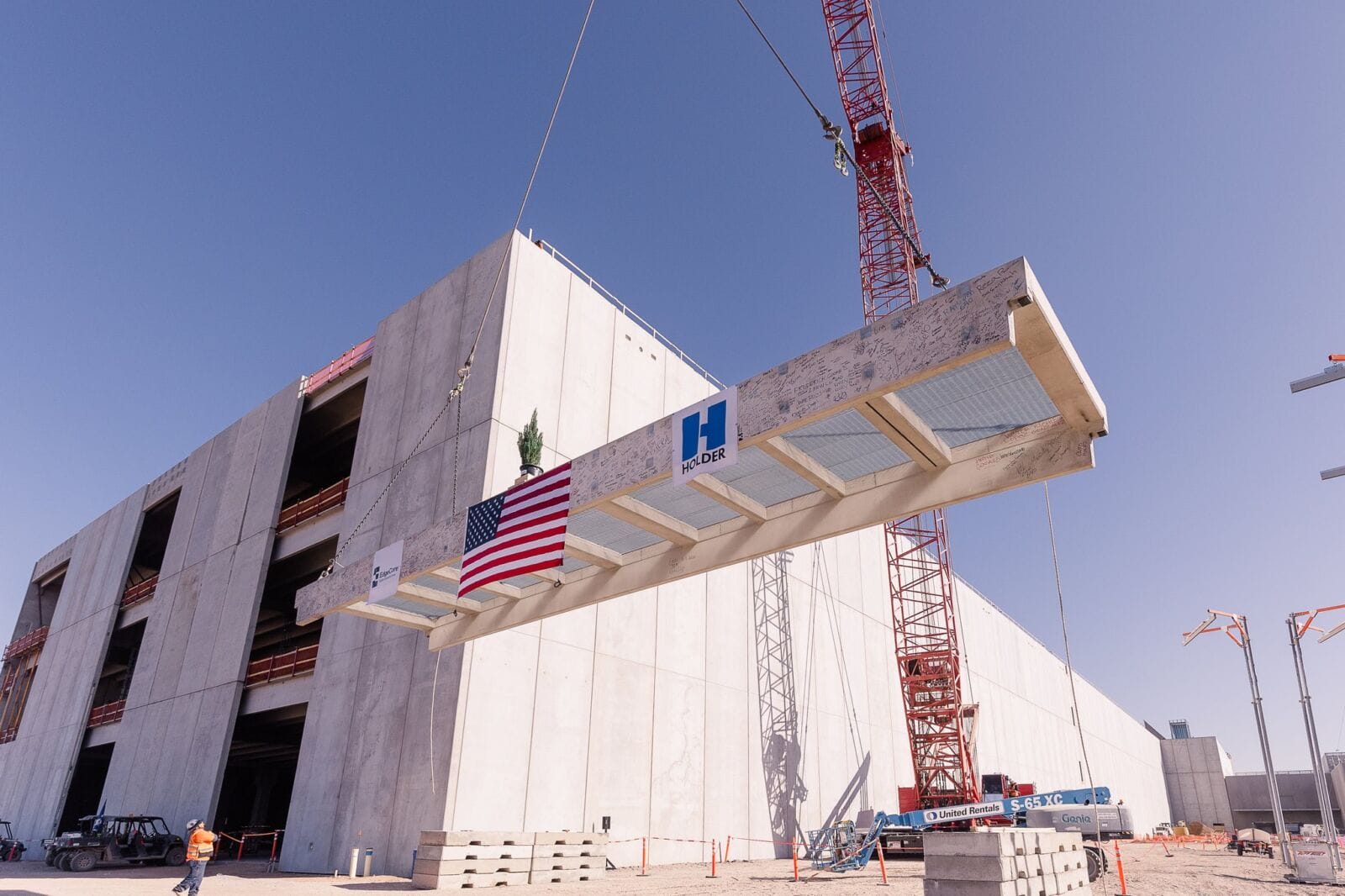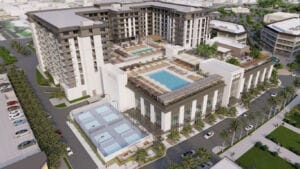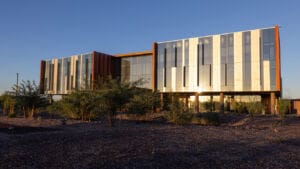On Dec. 4, EdgeCore Digital Infrastructure and Holder Construction celebrated a topping out event for the PH02 data center in Mesa. The more than 868,000-square-foot building is part of the larger 3.1-million-square-foot data center campus that will provide 450 MW of IT load upon completion.
“This area was once part of the 5,000-acre General Motors Desert Proving Grounds where I served as facilities manager. I’m so pleased that this land is getting a second chance to impact our economy,” explains Jack Sellers, former chairman of the Maricopa County Board of Supervisors. “Our county and our neighbors in Pinal continue to grow at an impressive rate. It’s our responsibility to make sure we meet the challenges that come with growth, and this [project] is one of the many ways we attain our goal.”
As technology advances, so does the need for data centers. Bill Jabjiniak, senior vice president for national community engagement for EdgeCore Digital Infrastructure compares the ubiquity of internet-connected devices to the utilities people depend on for their daily lives.
“When you turn on the faucet, you expect water. Data centers are becoming like that. If you go online, you expect things to work,” Jabjiniak explains. “[Greater Phoenix] is fast becoming the AI center of the West. Think about TSMC and Intel — as they build chips that are faster and more efficient, some of that [internet traffic] is going to come through these data centers.”
Lee Kestler, CEO of EdgeCore Digital Infrastructure, adds that the original plans for the site were smaller in scope, but a confluence of factors led the management to make the Mesa facility a flagship campus.
“We had to redesign everything, but that was a triangulation of information from our customers, our partners in the supply chain and in the construction field.” Kestler says. “Go big or go home.”
With making such a large commitment in Mesa, Kestler says that being a good neighbor is important for EdgeCore. That has manifested in a push to hire as many local construction workers as possible — something the company does in every market it operates. EdgeCore also understands that water stewardship is paramount in a desert community and has taken steps to ensure the development is as efficient as possible, utilizing air-cooled chilling that requires less water than 10 residential houses.
“When we first started seeing the growth in data centers in this area, many people, including me, were concerned about the increased use of electricity and water,” Sellers says. “Companies like EdgeCore have adapted and made the necessary changes to thrive in this environment. That, to me, represents what we can achieve when industry and the community work together.”
MORE NEWS: Does data center power need pose risk to continued growth?
Power availability is another constraint on economic development in the Valley, especially for data center projects which require high volumes of uninterrupted power since they provide mission critical services for companies and municipalities.
“Over the last two years, our utilities have hit record peak demands,” explains Kevin Thompson, member of the Arizona Corporation Commission. “[2024’s] record peak of 8,219 MW exceeded [2023’s] record peak, and the lights never flickered. If you want to know what is most important to technology companies like EdgeCore, it’s access to reliable and resilient energy. Arizona’s electric utilities have done an amazing job, and they should be recognized for that. As we begin to see more things like driverless cars and AI, the demand for power will continue to grow, and we’ll need more generation and transmission to continue this evolution.”




